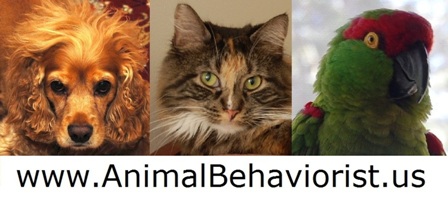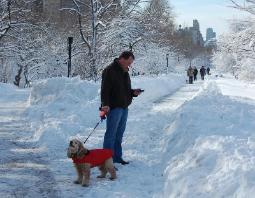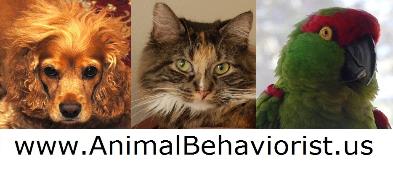
Winter and the city dog |
Winter safeguards for city dogs copyright (c) 2021 Frania Shelley-Grielen.
All rights reserved.
New York City winters can be serious; all that ice, snow and blustery weather,
keeping streets and sidewalks clear and safe to navigate takes some heavy duty
doing. That means tons of salt, sand and chemical deicers which can harm and
irritate paw pads and can be dangerous if ingested. Keeping warm indoors means
dry heated air which can create dry skin in both human and canine. Here are some
tips to help you and your dog make it through to spring:
this article on another website or in a document back to this web page. You may not
copy this article in whole or in part onto another web page or document without
permission of the author. Email inquiries to info@animalbehaviorist.us
All rights reserved.
New York City winters can be serious; all that ice, snow and blustery weather,
keeping streets and sidewalks clear and safe to navigate takes some heavy duty
doing. That means tons of salt, sand and chemical deicers which can harm and
irritate paw pads and can be dangerous if ingested. Keeping warm indoors means
dry heated air which can create dry skin in both human and canine. Here are some
tips to help you and your dog make it through to spring:
- Chemical deicers are mostly chloride salts which may contain magnesium,
- potassium, calcium or sodium. These salts are engineered to melt ice and
snow as quickly as possible and are frequently heavily applied to city
sidewalks. Contact with these caustic chemicals may be a source of great
discomfort for most dogs and can make winter walks truly uncomfortable for
both you and your dog. (The uses of these chemicals are also problematic for
urban birds, squirrels, feral cats, groundwater and storm runoff.)
Your dog may express overt discomfort on contact with salt and deicers.
For example, my dog, Daisy, will stop, whimper, hold up an affected paw
and then proceed to attempt to lick off the offending material. Or your dog
may appear more reluctant to take walks and more eager to return. If at all
possible, chemical deicers should be avoided. (Bathing your dog’s feet in a
bowl of warm water on return home is always a good idea, no matter what
the weather.)
- Booties are one way to protect the feet of your dog. When shopping for booties
- make sure to purchase a set which have actually been designed to fit dog paws
appropriately. If your dog refuses to wear them or balks at the sight, think
either novelty or fit. And while you can get your dog used to the idea of
wearing booties (offer treats before, during and after trying on and wearing),
you surely do not want to get your dog to accept wearing shoes that hurt. A
popular brand of doggie galoshes are rubber booties that resemble balloons.
Disposable, reusable and affordable, these paw coverings do work but must be
put on carefully to avoid catching a dog’s sensitive dewclaw. Again, practice
beforehand with feeding treats at the same time to create positive associations
with winter footwear. Removing them without the elastic snapping your dog’s
paw in the process also takes some focus. If you do use booties for your pet,
remember to rinse them off after use.
- Caught in the latest snow storm without paw protectors? Carry one moist
- washcloth in a plastic bag and another dry one in a separate bag. If your dog
reacts to deicers you can remove them on the spot. Make sure to wipe and dry
as thoroughly as possible.
- An emollient protectant that is applied directly to your dog’s paw pads is
- another product that promises to protect from winter sidewalks as well as hot
asphalt in the summer. While this may be effective against the driven snow,
chemical deicers seem to penetrate despite the product’s claims. Advantages
to using this type of product are in the ease of use and the added benefit of
conditioning paw pads along with protecting them.
- Leaving your dog tied outside while you run an errand inside is never a good
- idea in any kind of weather, and now it can be illegal. The City Council passed
a law several years ago banning owners from tethering dogs wearing choke or
pinch collars. The law also prohibits leaving a dog without food, water or
shelter for more than 15 minutes while tied up.
- When it comes to coats, it comes down to what your dog is already wearing
- and what type of breed you have. When purchasing a dog coat look for
something that will also protect your dog’s underside, the part most
exposed to the sidewalk. Also, try and get something fitted for a dog and
not a human; better dog coats are modeled more along the lines of a horse
blanket and not a parka.
Puppies typically have less body fat than adults so they would most always
benefit from a coat. Huskies, Newfoundlands, Bernese Mountain Dogs, etc., are
probably not going to appreciate any extra clothing in this weather, but most
other breeds might. Also, if your dog sports a show cut such as a cocker
spaniel’s where most of the dog’s upper coat has been shaved off, you definitely
want to go for the dog coat.
- Indoors, the dry heated air found in most NYC apartments affects both you
- and your pet. Try and pay extra attention to grooming your dog in the winter
season. Brushing your dog can distribute oils throughout the coat and benefit
the skin by stimulating blood flow. Brushing also controls matting, which can
be a source of harmful bacteria. Remember, your dog only needs to be bathed
once a month. And you can use conditioner after you shampoo your dog (and
which reduces static electricity) as long as you rinse extra thoroughly.
this article on another website or in a document back to this web page. You may not
copy this article in whole or in part onto another web page or document without
permission of the author. Email inquiries to info@animalbehaviorist.us

Copyright Frania Shelley-Grielen
| "Booties are one way to protect the feet of your dog. When shop- ping for booties make sure to purchase a set which have actually been designed to fit dog paws appropriately. If your dog refuses to wear them or balks at the sight, think either novelty or fit. And while you can get our dog used to the idea of wearing booties (offer treats before, during and after trying on and wearing), you surely do not want to get your dog to accept wearing shoes that hurt." |

| Schedule an individual consultation |
copyright Frania Shelley-Grielen

info@animalbehaviorist.us
212-722-2509 / 646-228-7813
Website copyright Frania Shelley-Grielen
212-722-2509 / 646-228-7813
Website copyright Frania Shelley-Grielen
AnimalBehaviorist.us is a participant in the Amazon Services
LLC provide a means for sites to earn advertising fees by
advertising and linking to Amazon.com.
LLC provide a means for sites to earn advertising fees by
advertising and linking to Amazon.com.
Best viewed in
Google Chrome